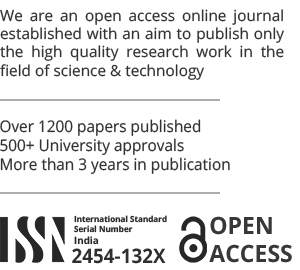The Postwar Novel as Postmodern: Billy Pilgrim’s Imagination and the Critical Tendency Towards Teleology, Slaughterhouse – Five
Published by: Suman Rajest .S, Anbarasi
Full Details
Research Paper
An Optimization Technique to Detect the Forgery in Digital Images by Using Ant Colony Optimization
Published by: Neha Jain, Er. Sushil Bansal
Full Details
Research Paper
Novel Framework for Software Defect Classification by Hybridization of Sampling and Classifier Algorithms with Kernel Principle Component Analysis
Published by: Deepak, Maninder Kaur
Full DetailsModified snack recipe Varagu Tikki for Diabetes Mellitus
Published by: Shruti Bhavsar, Sneha Patil, Swapana Nerkar, Swati Sawant, Dr. Rupali Sengupta
Full DetailsAnalysing EOT (extension of time) claim procedure in Indian construction industry along with case study
Published by: Ayush Kushwaha, Anutosh Kushwaha
Full DetailsSimulation Implementation of Different Types of Loads for High Gain Single Stage Boosting Inverter
Published by: Pravin Appasaheb Mali
Full Details
